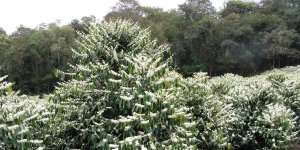Plants and plant products

One of the most widely recognized benefits of moderate red wine consumption is its positive impact on cardiovascular health. »

Coffee consumption presents a complex mix of benefits and drawbacks across different age groups. »

The bilberry bush is native to northern areas of Europe and Asia, the northern United States, and Canada. Its dark berries resemble blueberries. »

Passionflower is a climbing vine that is native to the southeastern United States and Central and South America. »

Chamomile was described in ancient medical writings and was an important medicinal herb in ancient Egypt, Greece, and Rome. »

Aloe is a cactus-like plant that grows in hot, dry climates. It is cultivated in subtropical regions around the world, including the southern border areas of Texas, New Mexico, Arizona, and California. »

Milk thistle is a plant whose fruit and seeds are used for liver and bile duct disorders. »

They contain a diverse array of bioactive compounds that modulate immunity, inflammation, tumors, microbes, and diabetes through various cellular and molecular mechanisms. »

Used as a spice for thousands of years, cinnamon comes from the bark of various species of cinnamon trees. »

The soybean, soy bean, or soya bean is a species of legume native to East Asia, widely grown for its edible bean, which has numerous uses. »

Cat’s claw is a woody vine that grows wild in the Amazon rainforest and other tropical areas of Central and South America. Its thorns resemble a cat’s claws. »

Bitter orange has been used in traditional Chinese medicine for indigestion, nausea, and constipation. »

The açaí palm tree, native to tropical Central and South America, produces a deep purple fruit. The açaí fruit has long been an important food source for indigenous peoples of the Amazon region. »

Astragalus has been used for centuries in traditional Chinese medicine in combination with other herbs. »

Plato, seeing Diogenes eating his supper of lentils said to him: “If you had only pandered to Dionysius you wouldn’t have to eat lentils.” To which Diogenes replied: “If you would only have learned to eat lentils, you wouldn’t have to pander to Dionysius.” »

Withania somnifera (L.) Dunal is an evergreen shrub cultivated in tropical and subtropical areas of Asia, Africa, and Europe. It is commonly called by the Sanskrit name, ashwagandha, because the plant’s roots are said to smell like a wet horse (“ashwa” for horse and “gandha” for smell). »

The sweet potato is known for its large, sweet-tasting tuberous roots used as a root vegetable. The plant is not closely related to common potatoes and is native to tropical regions of the Americas. »

Cranberries, with their vibrant red hue and tart taste, are more than just a festive fruit. They are a source of bioactive compounds with potential health benefits ranging from preventing urinary tract infections to combating cardiovascular diseases. »

Brazil nuts are a nutritious and flavorful nut that grows on large trees in the Amazon rainforest. The Brazil nut tree, also known scientifically as Bertholletia excelsa, can grow over 160 feet tall and live for up to 500-700 years. It is native to the Amazon basin in South America, mainly in Brazil, Bolivia, Colombia, Venezuela and Peru. »

Turmeric is a spice that has been used for centuries in traditional medicine, particularly in Indian and Chinese traditions. It contains a bioactive compound called curcumin, which is responsible for many of its potential health benefits. »

Mushrooms are a versatile and delicious ingredient that can elevate the flavors of your meals while providing numerous health benefits. Whether you enjoy them sautéed, grilled, or in a hearty stew, mushrooms are a fungi that deserves a special place on your plate. »

The beneficial properties of algae make them great functional ingredients for food products. Algae have a high energy value and are a source of biologically active substances, proteins, fats, carbohydrates, vitamins, and macro and microelements. »

Microgreens are tiny, tender, edible sprouts that germinate from the seeds of vegetables and herbs. They are smaller than baby greens and are typically harvested 7 to 14 days after germination. These greens are known for their variety of leaf flavors, colors, and textures, making them popular for garnishing salads, soups, plates, and sandwiches. »

Among other things, some plants contain in their cells two physically separated chemicals: myrosinase and glucosinolates. When plant cells are damaged, the two chemicals are released and come in contact, resulting sulforaphane that has a pungent taste, that may repel predators… human included. »

Amla, also known as Indian gooseberry, is one of the most antioxidant-rich foods known. It holds a significant place in the Indian traditional system of medicine, Ayurveda, and can be used in dried or fresh form. »

Grapes are one of the most popular and widely cultivated and consumed fruits in the world. They are eaten as fresh fruit and are also used to produce products like wine, grape juice, and raisins. Many studies have revealed that grapes possess a variety of health benefits, such as antioxidant, anti-inflammatory, gut-microbiota-modulating, anticancer and cardioprotective effects. »

Studies conducted to investigate the effects of nut consumption on human health found that eating about 50-100 grams of nuts at least five times a week as part of a heart-healthy diet with a moderate total fat content can significantly decrease total cholesterol and low-density cholesterol in both normal and hyperlipidemic individuals. »

All oils are not created equal, and understanding their differences and effects is essential for making informed dietary choices. »

